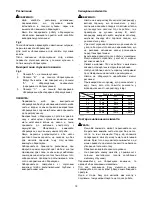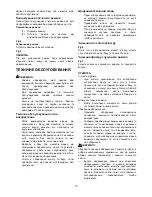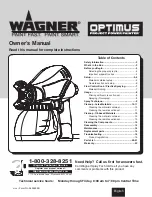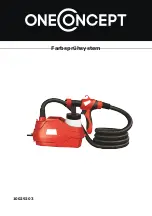
4
ENG901-1
•
The declared vibration emission value has been
measured in accordance with the standard test method
and may be used for comparing one tool with another.
•
The declared vibration emission value may also be
used in a preliminary assessment of exposure.
WARNING:
•
The vibration emission during actual use of the power
tool can differ from the declared emission value
depending on the ways in which the tool is used.
•
Be sure to identify safety measures to protect the
operator that are based on an estimation of
exposure in the actual conditions of use (taking
account of all parts of the operating cycle such as
the times when the tool is switched off and when it
is running idle in addition to the trigger time).
ENH003-14
For European countries only
EC Declaration of Conformity
We Makita Corporation as the responsible manufacturer
declare that the following Makita machine(s):
Designation of Machine:
Cordless Garden Sprayer
Model No./ Type: BVF104, BVF154
are of series production and
Conforms to the following European Directives:
2006/42/EC
And are manufactured in accordance with the following
standards or standardised documents:
EN50580, EN60745
The technical documentation is kept by:
Makita International Europe Ltd.
Technical Department,
Michigan Drive, Tongwell,
Milton Keynes, Bucks MK15 8JD, England
12. 2. 2009
000230
Tomoyasu Kato
Director
Makita Corporation
3-11-8, Sumiyoshi-cho,
Anjo, Aichi, 446-8502, JAPAN
GEA010-1
General Power Tool Safety Warnings
WARNING Read all safety warnings and all
instructions.
Failure to follow the warnings and instructions
may result in electric shock, fire and/or serious injury.
Save all warnings and instructions for
future reference.
GEB044-4
SPRAYER SAFETY WARNINGS
Safety Warnings for Spraying Operation:
1.
Do not use the sprayer for any other purpose
than spraying agricultural and horticultural
chemicals for pest and weed control.
2.
Do not use the sprayer for spraying flammable
materials.
3.
Be aware of any hazards presented by the
material being sprayed. Consult the markings
on the container or the information supplied by
the manufacturer of the material to be sprayed.
4.
Do not spray any material where the hazard is
not known.
5.
Concerning the use of chemical sprays, be
sure to thoroughly read the chemical
instructions, in order to become fully
acquainted with toxicities and usage methods.
6.
If chemical comes into contact with skin,
immediately wash thoroughly with soap.
7.
Firmly close chemical tank lid to prevent leaking.
8.
Never transfer chemical to another container.
9.
Always thoroughly wash empty chemical
containers when mixing spray liquid and then
follow chemical manufacturer’s instructions to
correctly dispose of containers at all times.
10.
Before using the sprayer, be sure to check
there are no abnormalities, such as
displacement of packing from connector,
looseness of screws, missing components,
and/or cracked/worn/damaged hose.
Using an incomplete sprayer may cause an
accident and/or injury.
11.
People not involved in spraying should refrain
from approaching the worksite during spraying.
12.
When transporting a chemical-loaded sprayer
by vehicle, there is a risk of leaking, so always
firmly tighten the chemical tank lid, and secure
the sprayer in an upright position.
13.
Never use items such as strongly acidic chemicals,
paints, thinners, gasoline or benzene with the
sprayer, as there is a danger of burns or fire.
14.
Do not clean the sprayer with flammable solvents.
15.
Be sure to select the appropriate chemical
(taking into consideration usage method and
effectiveness) to deal with the pest or weed in
question.
16.
An inappropriately mixed chemical may harm
humans as well as damage crops/plants.
When mixing chemical, thoroughly read
chemical instructions, and dilute chemical
correctly prior to use.
17.
Always mix chemical before loading it into tank.
18.
To prevent inhalation and/or contact with
chemical, be sure to wear safety clothing (hat,
protective goggles, protective mask, rubber
gloves, long-sleeved pest-control jacket, long





































